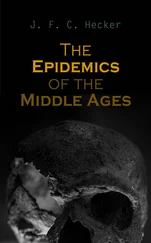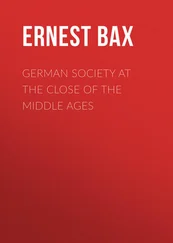While the whole trend of the passage through which the waters of the Euxine reach the Aegean is from east to west, the channel of the Bosphorus runs from north to south. 3At the point where it widens into the Propontis, the European shore is broken by a deep narrow inlet which penetrates for more than six miles and forms the northern boundary of a hilly promontory, on which Byzantium was built. This inlet or harbour was known as the Golden Horn, and it is the feature which made the fortune of Constantine’s city.
The shape of Constantinople is a trapezium, but the eastern side is so short that the city may be described as a triangle with a blunted apex. On three sides, north, east, and south, it is washed by water. The area of the city “is about four miles long and from one to four miles wide, with a surface broken up into hills and plains. The higher ground, which reaches an elevation of some 250 feet, is massed in two divisions — a large isolated hill at the south-western corner of the promontory, and a long ridge, divided, more or less completely, by five cross valleys into six distinct eminences, overhanging the Golden Horn.” These two masses of hill “are separated by a broad meadow through which the stream of the Lycus flows athwart the promontory into the Sea of Marmora.” 4
Constantine found the town 5as it had been left by the Emperor Septimius Severus, who had first destroyed and then restored it. The area enclosed by his wall occupied only a small portion of the later city, lying entirely to the east of a line drawn southward from the modern bridge. 6The central place in old Byzantium was the Tetrastoon, north of the Great Hippodrome which Severus built but left incomplete. In the north-east corner rose the fortified Acropolis, on which stood the chief temples. Against the eastern side of the hill, close to the shore, were a theatre and amphitheatre (Kynêgion); on the north a Stadion, for foot-races; on the north-west, the Stratêgion, an open space for military drill.
The area of Constantine’s city was about four times as large. He built a wall across the promontory from the Propontis to the Golden Horn, about two miles to the west of the wall of Severus. Of this wall of Constantine nothing is left, and its course can only be traced approximately; for within a city the city was enlarged, a new land fortification was built, and the founder’s wall was allowed to fall into decay and gradually disappeared. 7
The New Rome, as Constantinople was called, dissimilar as it was from the Old in all its topographical features, was nevertheless forced to resemble it, or at least to recall it, in some superficial points. It was to be a city of seven hills and of fourteen regions. One of the hills, the Sixth, lay outside the wall of Constantine, on the Golden Horn, and had a fortification of its own. This was the Fourteenth Region. The Thirteenth Region lay on the northern side of the Horn (in Galata) and corresponded to the Region beyond the Tiber in Rome. 8
Constantine was more successful perhaps than he had hoped in attracting inhabitants to his eastern capital. Constantinople was dedicated in A.D. 330 (May 11), 9and in the lifetime of two generations the population had far outgrown the limits of the town as he had designed it. The need of greater space was met partly by the temporary expedient of filling up the sea, here and there, close to the shore, and a suburban town was growing up outside the Constantinian wall. 10The desirability of enlarging the city was forced upon the government, 11and early in the reign of Theodosius II the matter was taken in hand. Anthemius, Praetorian Prefect of the East and pilot of the State during the Emperor’s minority, may be called, in a sense, the second founder of Constantinople; the stones of his great wall still stand, an impressive monument of his fame.
The new line of circuit was drawn about a mile to the west of the old. The Anthemian wall did not extend the whole way from sea to sea. It was planned so as to take advantage of the fortification round the Sixth Hill, within which the Palace of Blachernae stood, but this north-western quarter of the city has been so changed, partly by subsequent constructions and partly by demolition, that it is impossible, at least without systematic excavation, to determine how the line of defence ran in the fifth century. 12
The wall which was constructed under the auspices of Anthemius (A.D. 413) 13sustained extensive damages from an earthquake in A.D. 447. It was then restored and strengthened by the exertions of the Praetorian Prefect Constantine, and a new outer wall was erected. 14At this time the city might have been exposed at any moment to an attack of the Huns, and the whole work was executed with incredible rapidity in the course of a few months.
The fortification, thus completed and enlarged, was never afterwards structurally altered. It consists of five parts. The inner wall, which was the main defence, had a mean thickness of about 14 feet, and was strengthened by ninety-six towers, 60 feet high, about 60 yards apart. Each tower had two chambers, of which the upper, entered from the parapet of the wall, contained munitions, and was always occupied by watchmen. Between the inner and the outer wall was a terrace (peribolos) from 50 to 64 feet broad. The outer wall was only 2 to 6½ feet thick, and it was built for the most part in arches; it too had ninety-six towers, varying from 30 to 35 feet in height. Outside the wall was an embankment, 1561 feet broad; and outside the embankment a ditch, of varying depth, 16also 61 feet broad, and divided by low dams.
The fortification was pierced by ten gates, of which five were exclusively for military purposes. The two sets, civil and military, were arranged alternately. The chief and most famous entrance, nearest to the Sea of Marmora, was the Golden Gate. It may have been erected by Theodosius the Great as a triumphal arch in memory of his victory over the rebel Maximus. This imposing structure was pierced by three archways and was built of huge square blocks of polished marble. Above the central archway, on either front, it bore the following inscription in metal:
haec loca Theudosius decorat post fata tyranni.
aurea saecla gerit qui portam construit auro. 17
This designation of the arch as a gate suggests that Theodosius may have already contemplated the enclosure of the city by a new wall. 18
The other four public gates were those known by the names of Melantias, Rhegion, St. Romanus, and Charisius. 19The stretch of wall descending from the Gate of St. Romanus into the valley of the Lycus, and then ascending to the Gate of Charisius, was known as the Mesoteichion or Middle Wall, and when the city was attacked the enemy usually selected it as the most vulnerable portion of the defences. The gates divided the wall into six sections, each of which had its own division of the garrison, distinguished as the First, the Second, and so on. In each section, except in the short one between the Golden Gate and the sea which was manned by the First division, there was a military gate giving access to the terrace, and these gates were distinguished by the number of the division. Thus the military gate between the Porta Aurea and the Porta Melantiados was known as the gate of the Second. 20The gate of the Sixth, north of the Porta Charisii, was called the gate of the Xylokerkos, from a wooden circus which was near it.
It was twenty-five years after the completion of the wall of Anthemius that the sea-walls of the Constantinian city were extended along the Golden Horn and the Marmora to join the new line of fortification. This work seems to have been carried out under the direction of Cyrus, Prefect of the city, in A.D. 439. 21
Читать дальше












